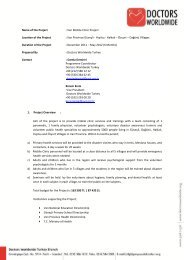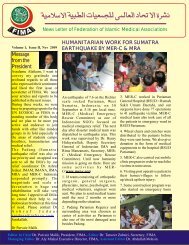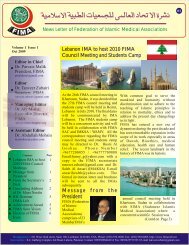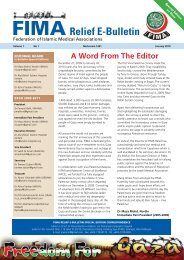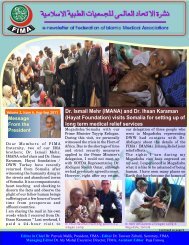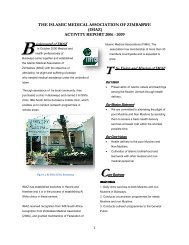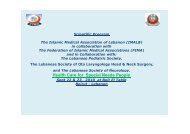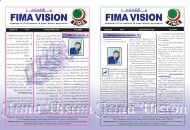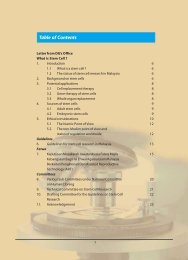FIMA Year Book 2009 - Federation of Islamic Medical Associations
FIMA Year Book 2009 - Federation of Islamic Medical Associations
FIMA Year Book 2009 - Federation of Islamic Medical Associations
You also want an ePaper? Increase the reach of your titles
YUMPU automatically turns print PDFs into web optimized ePapers that Google loves.
Clinicians As Effective Researchersphysiologist standing in front <strong>of</strong> ahorse, holding a thin tube that hadbeen put into the jugular vein in theanimal’s neck and then guided into one<strong>of</strong> the heart’s chambers. He could notunderstand why this simple technique,which would avoid the complications <strong>of</strong>opening the chest, had not already beentried on humans. Forssmann asked hissupervisor, Dr. Richard Schneider, forpermission to try this procedure on aterminally ill patient. The request wasflatly refused, and Schneider forbadeForssmann from doing the experimentat all on any person, including himself.Forssmann decided to do the experimentanyway, in secret. With the help <strong>of</strong> nurseGerda Ditzen, Forssmann successfullypassed a ureteral tube through a largeantecubital vein into his right atriumand confirmed this historical successwith a chest Xray (1) . Thus began theera <strong>of</strong> intravascular catheterization, aprocedure now taken forgranted andsometimes even overused and abused,as was the case with Swanz Ganzcatheter. (2) It was Werner Forssmann’scuriosity, persistence, and willingnessto experiment on himself thatresulted in the advent <strong>of</strong> intravascularcatheterization, for which he receivedthe Nobel Prize in Physiology orMedicine in 1956.Victor HerbertIn 1959, Victor Herbert was a 32-yearoldhematologist who believed,contrary to prevailing views, thatdietary deficiency alone can result infolate-deficient anemias. Sometimes,experience with a single patient canchange a researcher’s thinking, and thatwas the case with Herbert when he sawan engineer who had retired from theBoston subway system and presentedwith a combination <strong>of</strong> scurvy andfolate deficient megaloblastic anemia.Herbert learned that his patient, whowas on a very tight budget, ate all hismeals at a chain <strong>of</strong> fast-food hamburgerstands in Boston. As Herbert stated:“After a diet <strong>of</strong> 15-cent hamburgers,donuts, and c<strong>of</strong>fee for five years,my patient developed scurvy andmegaloblastic anemia, which I believedwas due to folate deficiency.” To provehis hypothesis, Herbert went on a strictvitamin- deficient diet, and after 133days <strong>of</strong> a folate-deficient diet, a weightloss <strong>of</strong> 26 pounds, a drop <strong>of</strong> hematocritfrom 48-42%, and nine bone marrowexaminations, Herbert developedmegaloblastic anemia, confirmingcause and effect.Songtao ShiSongtao Shi observed red tissue insidethe deciduous tooth <strong>of</strong> his 6-year-olddaughter. From these and other teethShi developed stem cells from humanexfoliated deciduous teeth (SHED) atthe NIH laboratories These cells havepotential to develop dentin, which oneday may be used to repair damagedteeth, induce regrowth <strong>of</strong> bone, andtreat nerve injury or disease. This workis currently in progress. (3)<strong>FIMA</strong> <strong>Year</strong><strong>Book</strong> <strong>2009</strong>129




